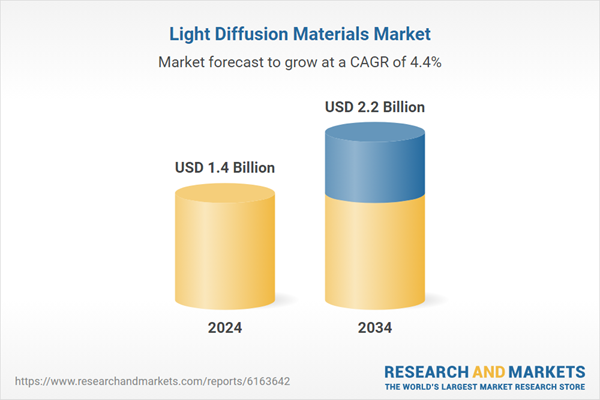As light diffusion becomes a critical element in LED-based systems, integration into intelligent lighting environments and next-gen displays is gaining traction. Automotive lighting systems - especially interior cabin lights, tail lamps, and headlights - are a key application area, as they rely heavily on uniform illumination to enhance both design and user safety. These materials enable consistent light spread, reducing unwanted shadows and intense spots, which is especially important in user experience across consumer and industrial applications.
Acrylic-based diffusers are gaining popularity due to their excellent light transmission and refined appearance, with their market segment projected to grow at a CAGR of 4.2% through 2034. Improvements in manufacturing have significantly boosted their resistance to scratches and outdoor elements, making them increasingly suitable for decorative lighting and digital signage. Market dynamics suggest a rising preference for acrylics as their performance and durability improve in both indoor and outdoor lighting applications.
The LED lighting application segment generated USD 653.6 million in 2024 and is set to grow at a CAGR of 4.3% through 2034. As LED lighting adoption increases across commercial, residential, and industrial spaces, demand for light diffusion materials that enhance brightness uniformity, reduce glare, and support energy efficiency is accelerating. Innovations in diffuser technology are helping extend LED performance while improving overall design appeal.
United States Light Diffusion Materials Market generated USD 357.8 million in 2024 and is anticipated to grow at a CAGR of 3.8% through 2034. The U.S. market is expanding steadily due to increased use of LED technologies, supported by national energy efficiency programs and ongoing smart city developments. These trends are fueling interest in lightweight, eco-conscious materials suitable for electronics, transportation, and architecture. Meanwhile, Canada is also seeing upward momentum in light diffusion applications, driven by green building practices, infrastructure modernization, and a consumer shift toward sustainable materials in lighting and display solutions.
Leading manufacturers shaping the Global Light Diffusion Materials Market include Covestro AG, SABIC, 3M, BrightView Technologies, Luminit LLC, Dai Nippon Printing Co., Ltd., Plaskolite, Curbell Plastics, Inc., Ray Chung Acrylic Enterprise Co., Ltd., Haining Gensin Plastic Sheet Co., Ltd., AC Plastics, and Sekisui Kasei (TECHPOLYMER). These companies continue to lead innovation and scale production to meet the growing demand for advanced diffusing solutions. To reinforce their global market presence, companies operating in the light diffusion materials sector are investing heavily in R&D to enhance material clarity, thermal resistance, and optical performance. Partnerships with LED system manufacturers and OEMs allow for early-stage material integration, optimizing product compatibility. Many players are expanding their production capacity and establishing regional manufacturing hubs to reduce lead times and meet local sustainability regulations. Customization of light diffusion sheets and films based on application-specific requirements - such as automotive or architectural lighting - is another approach used to cater to niche demands. Additionally, key brands are prioritizing sustainable packaging, recyclable formulations, and bio-based polymers to align with environmental and regulatory expectations while enhancing brand value.
This product will be delivered within 2-4 business days.
Table of Contents
Companies Mentioned
The companies profiled in this Light Diffusion Materials market report include:- 3M
- SABIC
- Covestro AG
- Luminit LLC
- BrightView Technologies
- Plaskolite
- Curbell Plastics, Inc.
- Dai Nippon Printing Co., Ltd.
- Sekisui Kasei (TECHPOLYMER)
- AC Plastics
- Haining Gensin Plastic Sheet Co., Ltd.
- Ray Chung Acrylic Enterprise Co., Ltd
Table Information
| Report Attribute | Details |
|---|---|
| No. of Pages | 192 |
| Published | July 2025 |
| Forecast Period | 2024 - 2034 |
| Estimated Market Value ( USD | $ 1.4 Billion |
| Forecasted Market Value ( USD | $ 2.2 Billion |
| Compound Annual Growth Rate | 4.4% |
| Regions Covered | Global |
| No. of Companies Mentioned | 13 |









